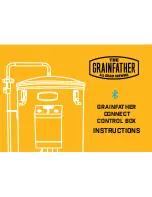
SECTION 6 - TROUBLESHOOTING
31215825
6-1
SECTION 6. TROUBLESHOOTING
6.1 GENERAL
This section contains troubleshooting information to be used for locating and correcting most operating problems. If a problem
should develop which is not presented in this section or which is not corrected by listed corrective actions, technically qualified guid
-
ance should be obtained before proceeding with any maintenance.
IT IS A GOOD PRACTICE TO AVOID PRESSURE-WASHING ELECTRICAL/ELECTRONIC COMPONENTS. SHOULD PRESSURE-
WASHING BE UTILIZED TO WASH AREAS CONTAINING ELECTRICAL/ELECTRONIC COMPONENTS, JLG INDUSTRIES, INC. REC
-
OMMENDS A MAXIMUM PRESSURE OF 750 PSI (52 BAR) AT A MINIMUM DISTANCE OF 12 INCHES (30.5 CM) AWAY FROM
THESE COMPONENTS. IF ELECTRICAL/ELECTRONIC COMPONENTS ARE SPRAYED, SPRAYING MUST NOT BE DIRECT AND BE
FOR BRIEF TIME PERIODS TO AVOID HEAVY SATURATION.
6.2 TROUBLESHOOTING INFORMATION
Troubleshooting procedures applicable to this machine are listed and defined starting with Section 6.8, Troubleshooting Tables Index
in this section of the manual.
Each malfunction within an individual group or system is followed by a listing of probable causes which will enable determination of
the applicable remedial action. The probable causes and the remedial action should, where possible, be checked in the order listed in
the troubleshooting tables.
It should be noted that there is no substitute for a thorough knowledge of the equipment and related systems.
It should be recognized that the majority of the problems arising in the machine will be centered in the hydraulic and electrical sys
-
tems. For this reason, every effort has been made to ensure that all likely problems in these areas are given the fullest possible treat
-
ment. In the remaining machine groups, only those problems which are symptomatic of greater problems which have more than one
probable cause and remedy are included. This means that problems for which the probable cause and remedy may be immediately
obvious are not listed in this section.
The first rule for troubleshooting any circuit that is hydraulically operated and electrically controlled is to determine if the circuit is
lacking hydraulic oil and electrical control power. This can be ascertained by overriding the bypass valve
(mechanically or electrically)
so that oil is available to the function valve, then overriding the function valve mechanically. If the function performs satisfactorily, the
problem exists with the control circuit.
6.3 HYDRAULIC CIRCUIT CHECKS
(SEE FIGURE 6-10.)
The first reference for improper function of a hydraulic system, where the cause is not immediately apparent, should be the Hydraulic
Diagram Circuit
.
The best place to begin the problem analysis is at the power source
(pump)
. Once it is determined that the pump is
serviceable, then a systematic check of the circuit components, would follow.
NOTE:
For aid in troubleshooting, refer to Figure 6-10. for HYDRAULIC DIAGRAM circuit.
6.4 ELECTRICAL CIRCUIT CHECKS
General
The drive system on the MVL and MSP machines requires a microprocessor controlled electrical circuit to operate smoothly and accu
-
rately. All platform control console functions are relayed to various machine components
(i.e. platform up/down, drive functions, etc.)
through the Ground Control Module microprocessor box
(mounted at the rear of the machine)
. The Ground Control Module is pre-pro
-
grammed with factory pre-set personality settings for each machine function.
To help diagnose any problems with components plugged into the Ground Control Module, the module is designed with an internal
fault code and text messaging system displayed on an LCD screen at the module. The platform control console also will display LED
Flash Codes using the LED strip at the top of the console. When operating normally the LED panel on the platform control console
indicates the battery voltage status using ten (10) LEDs
(red/yellow/green)
. If a malfunction to the machine’s electrical components
occurs, the platform console LED’s will flash a number of LEDs to help indicate the problem to the Operator in the platform. The Fault
Codes and LED Flash Codes are outlined in the following sub-sections of this chapter.
Go to
Discount-Equipment.com
to
order your
parts
















































